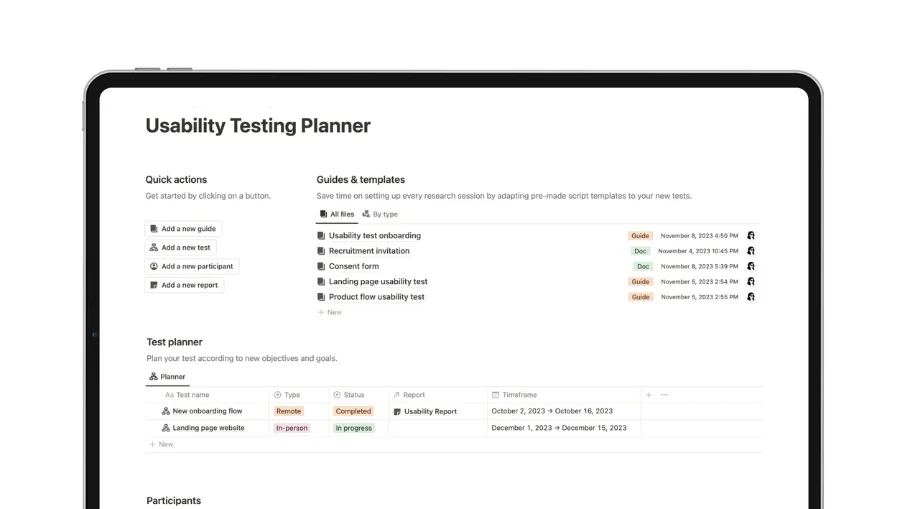


Usability Testing Planner
Moderated Usability Testing Planner for small businesses, entrepreneurs, and busy designers
Usability Testing Planner for small businesses, entrepreneurs, and busy designers
This is the resource I wish I had when I started conducting usability tests. The goal of this test planner is to help your business identify and fix issues early in the design and development process, reducing the cost of a bad user experience or unnecessary changes later on.
With numerous tests under my belt, I got you covered from setup to analysis, so you can focus on your product. I’m confident that this planner will be a positive return of investment for your growing business.
What's inside:
Start usability testing with professional guidance, checklists, and templates that walk you through the entire process and help you learn the usability test fundamentals.
Practical scenarios and examples to inspire your testing process and help you apply practices in your own projects.
Intuitive test planner that captures your goals, key metrics, hypothesis, and test flows.
Participant database to manage user profiles, plan session timeline, and document observations using a template for notes.
Usability report template that help you classify and organize raw data into actionable insights by using a well-established framework.
FAQ
I have never conducted a usability test. Is this template still for me?
Yes, I tried to make this kit as beginner-friendly as possible. Even if you have never conducted a usability test before, the planner resources should be enough to get you started.Is this just a Notion template?
No. Inside the template, I've included a usability test onboarding, various templates, checklist from start to end, and examples to illustrate how the template functions with actual data.Don't I need to be a designer to conduct a usability test?
Design experience is helpful, but not a prerequisite. Anyone with the willingness to improve their product's user experience can conduct usability tests.I am a designer. Would I still benefit from this template?
Yes, even experienced designers can find value in the template's structured approach, designed to streamline usability testing. If you work in a team, the template can facilitate collaboration and ensure everyone is on the same page regarding usability testing processes and goals.What types of products can benefit from usability testing?
Usability testing can benefit a wide range of products, including websites, mobile apps, software applications, e-commerce platforms, physical products with digital interfaces, and more.Can I customize this template?
Absolutely! In the end, every business is different. You can customize the styling, icons, templates, databases according to your business needs.Is this refundable?
Due to the nature of digital items, refunds are not accepted.







